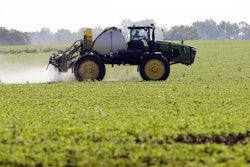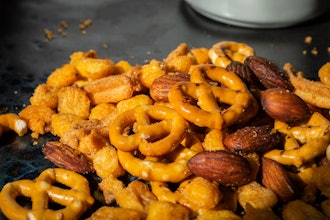CADDO PARISH, La. (AP) — A winter of well-spaced rains has provided a measure of drought relief for Louisiana farmers who wondered last fall whether their parched fields would fail during the planting season.
While recent rains have put much-needed moisture into soils, about half the state remains in various states of the drought that has persisted for almost two years.
Hardest hit have been northwest and coastal parishes.
The reprieve may be temporary — the long-range outlook calls for the drought to continue. But for now, topsoil is saturated in much of the state, relieving northwest Louisiana farmers who worried at Thanksgiving that another dry winter might ruin them, and washing salt water out of canals used to irrigate rice fields in coastal Vermilion Parish.
In rural Caddo Parish, lifelong farmer Peter Washington took the pragmatic approach of one who's seen nature's cycles give and take over the years. "When you farm, you know conditions are never really good. It's either too dry or too wet."
Posturing with a cowboy boot perched on the bumper of his pickup truck, Washington, 68, surveyed his fields on Friday as he prepared to plant his vegetable crop on about 20 acres.
The rain needs to be prolonged, he said. "Just being real wet for a few weeks doesn't really help. Is this rain going to help? Ask me again in July."
Still, others are more optimistic, saying recent rain is at least a good sign.
In the Gilliam community north of Shreveport, Steve Logan is preparing to plant a corn crop. "Everybody's feeling pretty good about it" in the northwest parishes, he said. "I think we'll start the year off with the potential to make a good crop."
In the state's coastal tier of parishes, rice farmers hope to have ground ready to plant at the end of February. "For the last three weeks, the weather has been wet, wet, wet," said Terry Matthews of the National Agricultural Statistics Service in Baton Rouge.
The rains have freshened salt-laden irrigation canals, flushing out water intruding from the Gulf of Mexico. Whether the wet weather hangs around is the concern. "It doesn't take us long to get salty," said Stuart Gauthier of the LSU AgCenter extension office in Vermilion Parish. "We almost have to have continuous rain to keep the saltwater out."
Donald Jones, a National Weather Service meteorologist in Lake Charles, said the Lake Charles area has had more than 13 inches of rain this year, about 6 inches above normal. Lafayette's rainfall is about an inch above average, and Alexandria's 5 1/2 inches above normal.
Kevin Berken of Lake Arthur, who expects to plant about 1,750 acres in rice this year, said a 7-inch rainfall in January pushed a lot of salt water out to the south. That's important to farmers who depend on surface water for irrigation, rather than deep wells.
He's worried about forecasts of below-normal spring rainfall.
He broke even last year, and thinks recent rains have flushed salt contaminants off his land. "I'm pretty confident that our land is OK, but we don't want to continue this kind of thing."
In north Louisiana, Logan figures he lost about half his crop in non-irrigated fields, and about 30 percent in those with irrigation. Good prices, and the fact that about 70 percent of his land is irrigated, let him break even, he said.
"We ended up harvesting a decent crop. Just a very expensive crop," he said.
In November, Logan said, farmers in the area were asking, "What if we hit March and it hasn't rained? What are we going to do?"
"We didn't have an answer," he said.
But December's soothing rains came regularly enough to make a difference but didn't wash away topsoil.
"There was no way we could have gone into the crop without some real relief this winter," Logan said.






















